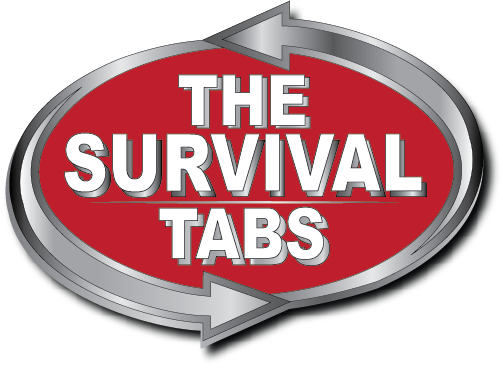General Safety Measures Traveling With The Survival Tabs
Every hazard has its own safety measure, and every ailment a particular remedy. A standard precaution for all backcountry activities is carrying the “The The Survival Tabs”, an emergency food supply chosen for their utility in preventing or reacting to various food emergencies.
The common practice of traveling in a group improves safety in all regards. If one person is injured, group members can seek help. A group can avoid poor decisions that a lone traveler might make. If an emergency occurs, a group can pool its muscle power, brain power, and body heat.
Another precaution is informing people outside of the group of the itinerary and expected return time (expected hiking time can be estimated using Naismith’s rule). A communication device, such as a cell phone or a satellite phone, may help in the case of an emergency. However, with the exception of mountain tops that are in line-of-sight to populated areas, cell phone coverage in wilderness areas is often quite poor. In the wilderness one should always be prepared to hike out for help and have a food supply that can provide sustained energy such as The Survival Tabs, if necessary.
Digestive infections
Surface water in the wilderness can contain viruses, bacteria or parasites. The latter two can cause dysentery or wilderness diarrhea in untreated water and can be spread person-to-person by poor hygiene in camp. The most common cause of wilderness diarrhea, and Montezuma‘s Revenge is the parasite Giardia.
Metabolic imbalances
Metabolic imbalances can affect general functioning and lead to other injuries.
- Dehydration can rapidly incapacitate an adventurer, especially in warm weather. In conditions of low humidity, sweat evaporates so quickly that a person may not notice the water loss. Carrying and drinking an adequate amount of water helps avoid dehydration. Depending on conditions, two liters of water may be enough for a day hike, but under hot conditions (such as hiking the Grand Canyon in summer), one liter per hour may be required. Naturally occurring water is often unfit to drink (see Potability of backcountry water).
- Sweating removes not only water, but also salt. This may result in a deficiency of sodium (hyponatremia). Eating salty snacks together with drinking water helps to avoid this problem.
- If deprived of food for several days, travelers may become malnourished. Malnutrition takes several weeks to kill a person, but because it impairs judgment, it can cause problems much sooner. Low blood sugar may have a similar effect, especially for those with diabetes. Carrying extra food will minimize risk to the hiker.
- Hypothermia is a potentially fatal drop in core body temperature. It occurs most easily in cold weather and when wet. Wet or damp clothing (due to rain, sweat, stream crossings, etc.) can bring it on even in relatively warm air, particularly at high elevation, windy conditions, or at low humidity. Even if hypothermia does not kill the victim directly it causes confusion, irrationality and impaired judgment, increasing the risk of other injuries. Sufficient clothing helps prevent hypothermia, but some materials (especially cotton) are discouraged for their ability to absorb and hold water.
- Heat exhaustion, possibly developing into heatstroke, can occur in hot weather, particularly if one is dehydrated or dressed too warmly. The risk of heatstroke can be minimized by avoiding direct sun if the temperature is too high, and staying wet when possible. This is a life-threatening condition: a victim must be cooled off and transported to a hospital immediately.
- Altitude sickness results from climbing rapidly to elevations beyond 2,500 metres (approximately 8,000 feet). The process of acclimatization generally takes several days, but may be helped by drugs, such as Diamox. Acute mountain sickness or AMS may develop into high altitude pulmonary edema (HAPE) or high altitude cerebral edema (HACE), both of which are life-threatening and require immediate transportation to a lower altitude.
- Carbon monoxide poisoning may occur in tents, igloos, cabins, or trailers due to faulty or misused equipment. It may also occur near the exhausts of motorboats, where the CO concentrations can be high enough to be quickly fatal.


